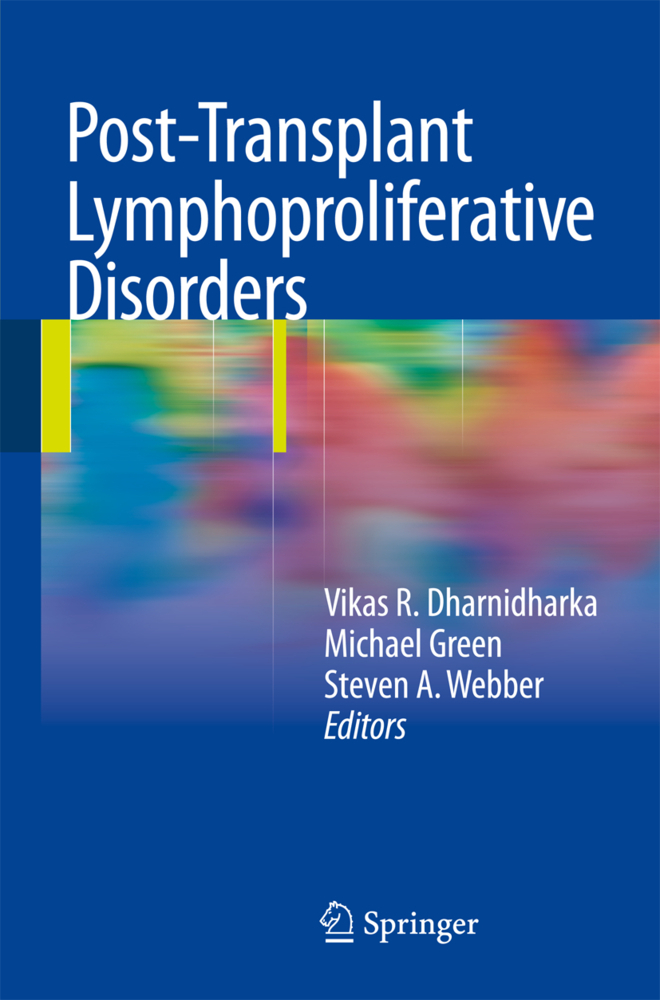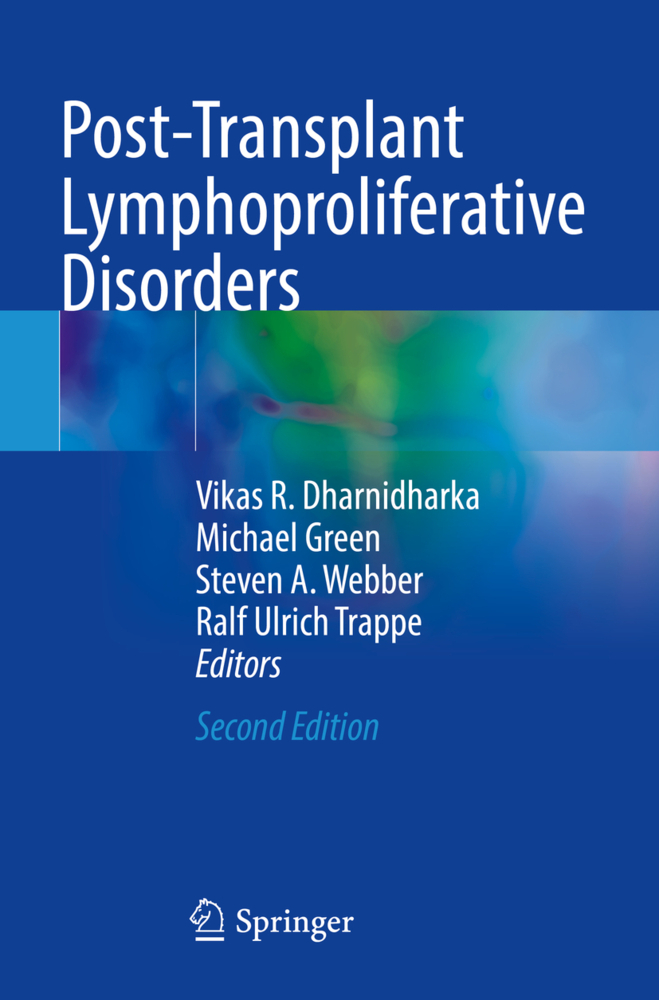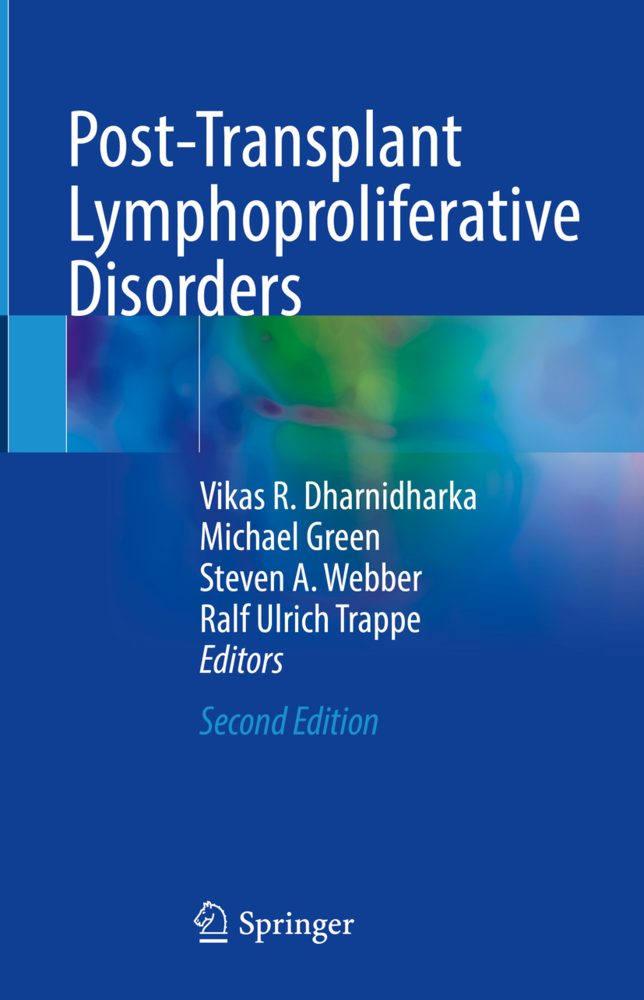Post-Transplant Lymphoproliferative Disorders
Post-transplant lymphoproliferative disorders are a group of conditions that straddle the borders between infection and malignancy. They were very rare prior to the mid-1980s but now can be expected to develop in 1-10% of transplant recipients. While some cases are reversible with reduction in immunosuppression, more severe forms are indistinguishable from frank lymphomas.
This book sets out to cover in depth every aspect of these disorders, including both basic science and clinical topics. The epidemiology is reviewed, and careful attention is paid to the role of Epstein-Barr virus in their development. Clinical features are documented and clear guidance is provided on diagnosis, with thorough description of pathologic and imaging findings. Further chapters are devoted to treatment, prognosis, preventive and pre-emptive strategies, and organ-specific considerations.
The state-of-the-art information contained in this book will aid researchers as well as the many different professionals involved in caring for patients with post-transplant lymphoproliferative disorders. The comprehensive and detailed coverage will appeal to those who already have some expertise in the field, yet the book will also serve as an invaluable resource for beginners in transplantation.
1;Dedication;5 2;Foreword;6 3;Contents;8 4;Contributors;10 5;Chapter 1;12 5.1;Introduction;12 5.1.1;References;14 6;Chapter 2;15 6.1;Historical Perspective on the Early Studies of Posttransplant Lymphoproliferative Disorders (PTLD);15 6.1.1;2.1 Malignancies in Immunocompromised Hosts;15 6.1.2;2.2 The Epstein-Barr Virus;16 6.1.3;2.3 The Serendipitous Intersection of Immunosuppression and EBV;16 6.1.4;2.4 Initial Studies of "Posttransplant Lymphoma";17 6.1.5;2.5 Growing Experience with EBV and Posttransplant Lymphoproliferative Diseases;17 6.1.6;2.6 Clinical Spectrum of Lymphoproliferative Disorders;18 6.1.7;2.7 Morphology;18 6.1.8;2.8 Clonality;19 6.1.9;2.9 EBV;20 6.1.10;2.10 Therapy;20 6.1.11;2.11 Summary Classification of PTLD;21 6.1.12;2.12 Pathogenesis;22 6.1.13;2.13 Conclusions;23 6.1.14;2.14 Take Home Pearls;23 6.1.15;References;23 7;Chapter 3;26 7.1;Epidemiology of PTLD;26 7.1.1;3.1 Introduction;26 7.1.2;3.2 Incidence of PTLD;26 7.1.3;3.3 Time to PTLD;28 7.1.4;3.4 Risk Factors for PTLD;28 7.1.4.1;3.4.1 Infection Related Risk Factors;28 7.1.4.2;3.4.2 Host-Related Risk Factors;29 7.1.4.3;3.4.3 Primary Disease Related Factors;30 7.1.4.4;3.4.4 Graft Organ Related Risk Factors;30 7.1.4.5;3.4.5 Immunosuppression Related Risk Factors;32 7.1.5;3.5 Mortality After PTLD;33 7.1.6;3.6 Risk for Graft Loss After PTLD;33 7.1.7;3.7 Re-Transplantation After PTLD in Prior Transplant;33 7.1.8;3.8 Take Home Messages;34 7.1.9;References;34 8;Chapter 4;38 8.1;The Biology of Epstein-Barr Virus and Posttransplant Lymphoproliferative Disease;38 8.1.1;4.1 Introduction;38 8.1.2;4.2 Biology of EBV;39 8.1.2.1;4.2.1 Infection;39 8.1.2.2;4.2.2 The Viral Life Cycle;39 8.1.2.3;4.2.3 Latent Cycle Genes of EBV;41 8.1.2.4;4.2.4 Characteristics of the T Cell Response to EBV in Healthy Individuals;43 8.1.2.5;4.2.5 Characteristics of the T Cell Response to EBV in Transplant Recipients;44 8.1.3;4.3 PTLD;45 8.1.3.1;4.3.1 Viral Determinants that Drive Growth and Survival of PTLD-Associated B Cell Lymphomas;47 8.1.3.2;4.3.2 Viral Mechanisms of Immune Evasion or Subversion;47 8.1.3.3;4.3.3 Direct Eff ects of Immunosuppression on Viral Infection and Tumor Cell Growth;48 8.1.4;4.4 Conclusion;49 8.1.5;4.5 Take Home Pearls;49 8.1.6;References;49 9;Chapter 5;53 9.1;Epstein-Barr Viral Load Testing: Role in the Prevention, Diagnosis and Management of Posttransplant Lymphoproliferative Disorders;53 9.1.1;5.1 Introduction;54 9.1.2;5.2 EBV VL Assessments-What Is Being Measured?;54 9.1.3;5.3 Limitations and Unresolved Issues Related to EBV VL Assays;56 9.1.4;5.4 Lack of Standardization and Cross-Referencing of Assays;56 9.1.5;5.5 Specimen Type and Reporting Units;57 9.1.6;5.6 The Use of EBV VL Assessments for Specifi c Clinical Purposes;59 9.1.6.1;5.6.1 EBV VL Assessments for Preemptive Programs Targeting PTLD Prevention;59 9.1.6.2;5.6.2 Laboratory Tests as Adjuncts to EBV VL Assessments;64 9.1.6.3;5.6.3 Laboratory Monitoring Algorithms;65 9.1.6.4;5.6.4 Defining Trigger Points for Preemptive Interventions;66 9.1.7;5.7 EBV VL Assessment for PTLD Diagnosis;66 9.1.8;5.8 EBV VL Assessments for Monitoring Response to PTLD Therapy and Predicting Relapse;67 9.1.9;5.9 EBV VL Assessments for Determining the Impact of New Immunosuppressive Regimens and Tailoring Individual Immunosuppression;69 9.1.10;5.10 Take Home Pearls;69 9.1.11;References;70 10;Chapter 6;76 10.1;Clinical Features and Diagnostic Evaluation of Posttransplant Lymphoproliferative Disorder;76 10.1.1;6.1 Introduction;76 10.1.1.1;6.1.1 Severe Infectious Mononucleosis, Clinical Categories, and Sites of PTLD;77 10.1.1.2;6.1.2 Clinicopathologic Correlates;80 10.1.1.3;6.1.3 Diagnostic Evaluation;81 10.1.1.3.1;6.1.3.1 Background Information on Patients;81 10.1.1.3.2;6.1.3.2 Initial Clinical Examination;82 10.1.1.3.3;6.1.3.3 Diagnostic and Screening Tests;83 10.1.1.3.3.1;General Tests and Non-EBV Specific Tests;84 10.1.1.3.3.2;EBV Specific Tests;87 10.1.1.3.3.3;Histopathology;89 10.1.1.4;6.1.4 Clinical Staging of PTLD;89 10.1.
Dharnidharka, Vikas R.
Green, Michael
Webber, Steven A.
| ISBN | 9783642016530 |
|---|---|
| Artikelnummer | 9783642016530 |
| Medientyp | E-Book - PDF |
| Copyrightjahr | 2010 |
| Verlag | Springer-Verlag |
| Umfang | 190 Seiten |
| Kopierschutz | Digitales Wasserzeichen |



